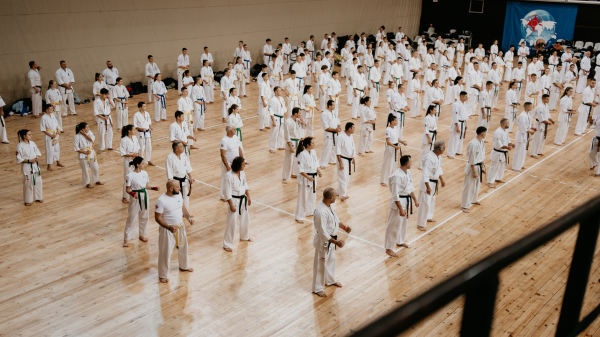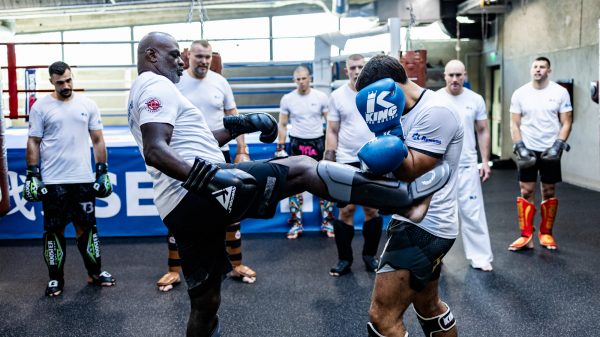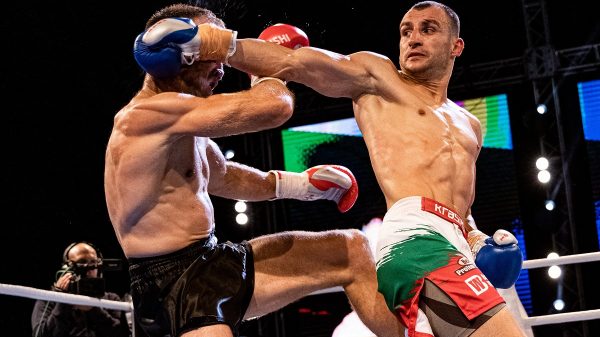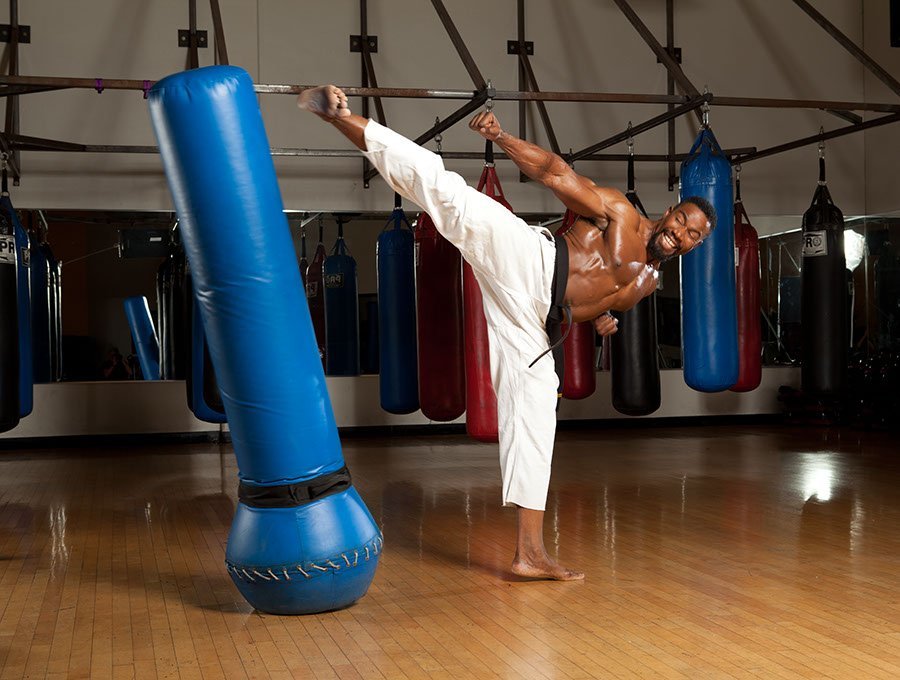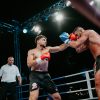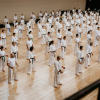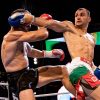Michael Jai White is one of the biggest stars of martial arts movies today. Much like Scott Adkins, he was born a little too late and would have been a mega-star in the 80s like Jean Claude Van Damme, but he has still carved out a nice career for himself.
A muscle-bound behemoth with surprising speed and agility, who isn’t above calling his various karate styles ‘kung fu’ if it fits the joke of his movies. Michael Jai White has been perhaps the biggest martial arts star the West has produced since the aforementioned Jean Claude Van Damme. He also has 8 black belts. So today, we’re going to look at Michael Jai White and the martial arts he has trained over the years.
Firstly, it should be said that while he holds 8 black belts, he holds them largely in styles of karate, meaning that his ability to earn these ranks will come from cross-over skills and knowledge of kata – despite what some enthusiasts would like you to believe – most karate styles are fundamentally the same, differing usually based on the kata or an on-paper philosophy for approaching a fight, that the practitioner is likely not to follow. It’s very unlikely that a Shotokan black belt will show a Kyokushin black belt a technique or idea they are not already familiar with, or vice versa.
While there are many karate styles on paper, in practice, you are really choosing between a style that trains for point-based sparring competition or a style that trains for knockdown-based competition.
1. Kyokushin
This is the primary style of Michael Jai White. Originally a student of Shigeru Oyama, White has used Kyokushin as the home base from which the rest of his skills spawn. Kyokushin is the most famous example of the knockdown approach to karate.
Founded by Mas Oyama, the style is built around a mixture of the kata and techniques of Shotokan and Goju-Ryu, with the latter approach to tough physical conditioning. The competitions are contested bare-knuckle, with fights disallowing punches to the head but allowing for grueling bare-knuckle body shots, with the way to win is through knocking your opponent down or out.
2. Taekwondo (both ITF and WTF)
It’s time to get controversial. Taekwondo is a style of karate that developed in Korea. The style was born specifically from Shotokan karate, focused further on the kicking techniques that already existed in the style, and began to build upon it by adding more turns to the kicks. As kicks score high in TKD competition, this forced more distance closing spinning kicks such as 720-degree round kicks.
Michael Jai White has a black belt in both ITF and WTF styles, which compete under different rules and scoring systems. The common conception is that ITF is more traditional and more like an actual fight (though semi-contact), whereas WTF is the Olympic style that you usually see today. WTF Taekwondo has become controversial in recent years when compared to what’s commonly referred to as the ‘power era’.
While spinning kicks are taught in Kyokushin, it’s reasonable to believe that some of the more acrobatic and elaborate kicks that we see in Michael Jai White’s movies come from his time training in both of these styles of Taekwondo.
3. Tang Soo Do
I expect some people were annoyed by my referring to Taekwondo as Karate, especially seeing as many believe that Taekwondo actually originated from Taekkyon. In actuality, this is probably not true, as Taekkyon, as it exists today, appears to be more a recreation of an old style than something with direct lineage to the old days.
Tang Soo Do is a slightly older art that also originated in Japanese-occupied Korea based upon Shotokan and can be seen as something of a middle ground between Taekwondo and Karate. A father of a close friend of mine held a black belt in Tang Soo Do and described it as being very similar but with more balance between punches and kicks – and truthfully, I couldn’t put it much better.
The question becomes ‘whats in a name?’ Taekwondo and Tang Soo Do have far more visual similarities with point-based styles of karate, like Shotokan, than Kyokushin does, yet for some reason, we don’t refer to them as what they are offshoots of karate.
4. Goju Ryu
Unlike a lot of other styles on this list, Japanese Goju and Okinawan Goju are actually quite different. Michael Jai White holds a black belt under Eddie Morales in Japanese Goju Ryu. An approach to the art that shares more in common with Shotokan, opting for more linear stances and point-based sparring, as opposed to the original Okinawan Goju, which favors more square stances and hard sparring more in line with what we see in Kyokushin.
5. Kobudo
One Okinawan art Michael Jai White trained in is Kobudo. Unlike all the other systems being used (save for Tang Soo Do, which dabbles in it), Kobudo is focused on weapons and armed combat. The weapons trained in Kobudo include bo staffs, sai’s, sickles, knuckledusters, tonfa, and nunchucks, which, despite being a Japanese weapon, were popularised by Bruce Lee.
Kobudo can perhaps best be described as an umbrella term for quite a few different weapons schools – but for an actor wanting to do action movies is absolutely invaluable. Allowing Michael Jai White to comfortably use any sort of object he may have to hand and turn it into some sort of improvised weapon for a fight scene.
6. Shotokan
It shouldn’t come as much of a surprise that Michael Jai White holds a black belt in the most common style of karate. It’s hard to overstate the influence of Shotokan over martial arts as a whole, especially given its influence on Kyokushin, which is, along with Muay Thai, the reason we have kickboxing today.
Shotokan is based on linear fencing-like movements and focuses slightly more on hand techniques than kicking techniques. It makes for a very solid, reliable style for any purpose so long as you make sure to practice Shotokan under full contact, continuous sparring as opposed to purely point sparring.
7. The Superfoot System
Currently, the 8th and most recent style that Michael Jai White earned a black belt in, the Superfoot System, is a kickboxing system developed by Bill ‘Superfoot’ Wallace, based on the style he developed in his days as a PKA kickboxer.
Bill Wallace’s System can best be described as ‘punches and lead leg’ as Bill Wallace’s knee injuries from judo prevented him from reliably kicking with his right leg. Instead, he developed a game based around using the side kick, round kick, and hook kick off his lead leg, with the chamber position acting as a soft-feint to prevent the opponent from knowing which strike was coming.
These are the 8 styles in Michael Jai White that currently hold a black belt. Perhaps in a few years, there will be another article cataloging the next 8 this martial arts enthusiast learns.
Author: Andrew Bryan, blackbeltmag.com








